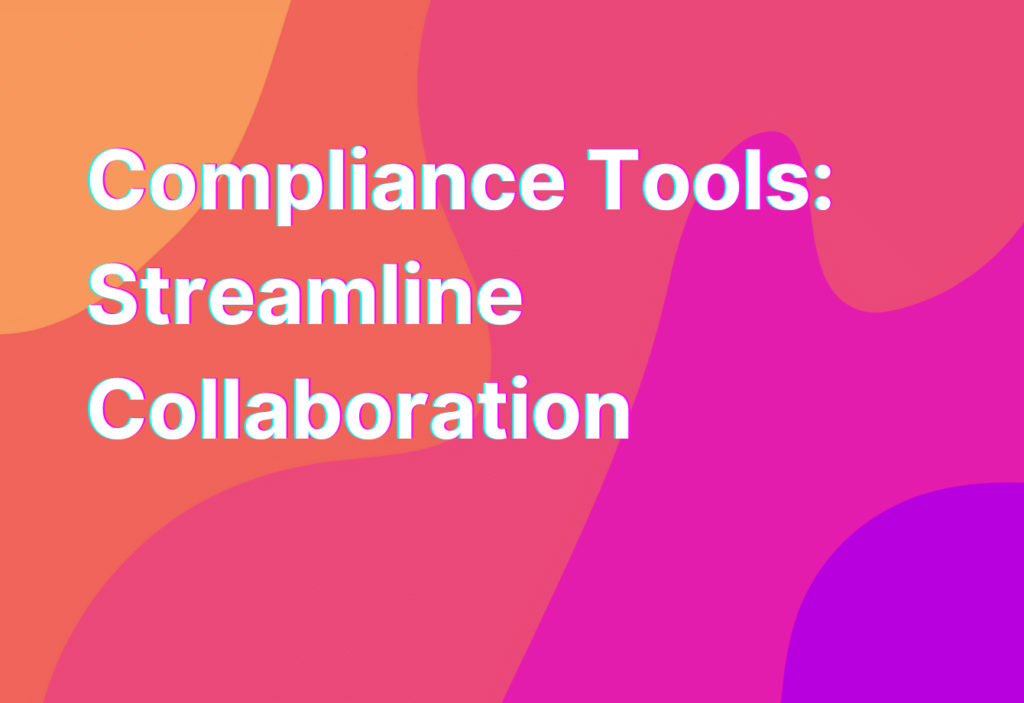Streamline Collaboration with Compliance Tools
Remote work has become increasingly popular in recent years, with more and more companies embracing the flexibility and benefits it offers. However, with remote work comes the need for effective collaboration tools to ensure teams can work together seamlessly, regardless of their physical location. Compliance tools are an essential component of remote collaboration, helping teams stay organized, secure, and compliant with industry regulations. In this article, we will explore some of the top compliance tools that can streamline collaboration for remote teams.
1. Trello
Trello is a popular project management tool that allows teams to organize and track their work in a visual and intuitive way. With Trello, you can create boards, lists, and cards to represent tasks, deadlines, and progress. This tool is particularly useful for remote teams as it provides a centralized platform for collaboration, making it easy to assign tasks, track progress, and communicate with team members.
One of the key features of Trello is its flexibility. You can customize boards and cards to fit your team’s specific needs, whether you’re managing a marketing campaign, developing a product, or planning an event. Trello also integrates with other popular tools like Slack, Google Drive, and Jira, making it even more powerful for remote collaboration.
Learn more about how Trello can simplify content management here.
2. Slack
Slack is a communication and collaboration platform that allows teams to communicate in real-time through channels, direct messages, and video calls. With Slack, remote teams can stay connected and collaborate effectively, regardless of their physical location.
One of the key advantages of Slack is its ability to integrate with other tools and services. You can connect Slack with project management tools like Trello or Asana, file sharing platforms like Google Drive or Dropbox, and even customer support systems like Zendesk. This integration allows for seamless collaboration and ensures that all team members have access to the information they need.
Additionally, Slack offers a wide range of features to enhance collaboration, such as file sharing, screen sharing, and app integrations. It also has a robust search functionality, making it easy to find past conversations and files.
3. LastPass
Security is a top concern for remote teams, especially when it comes to managing passwords and sensitive information. LastPass is a password management tool that helps teams securely store and share passwords, ensuring that only authorized individuals have access to sensitive data.
LastPass allows you to create and store complex passwords, eliminating the need to remember multiple passwords for different accounts. It also offers features like password sharing and password auditing, making it easy to collaborate securely with team members.
With LastPass, you can also enable multi-factor authentication for an extra layer of security. This ensures that even if someone gains access to your password, they still need an additional verification method to log in.
4. Google Workspace
Google Workspace (formerly G Suite) is a suite of productivity and collaboration tools offered by Google. It includes popular applications like Gmail, Google Drive, Google Docs, and Google Sheets, among others.
Google Workspace is particularly useful for remote teams as it allows for real-time collaboration on documents, spreadsheets, and presentations. Multiple team members can work on the same file simultaneously, making it easy to brainstorm ideas, make edits, and track changes.
In addition to collaboration features, Google Workspace also offers robust security and compliance measures. It includes features like data loss prevention, advanced phishing protection, and mobile device management, ensuring that your team’s data is secure and compliant with industry regulations.
5. Zoom
Zoom has become a household name in the past year, thanks to its video conferencing capabilities. With Zoom, remote teams can hold virtual meetings, webinars, and training sessions, allowing for face-to-face communication regardless of physical location.
Zoom offers features like screen sharing, breakout rooms, and recording, making it easy to collaborate and share information during meetings. It also integrates with other tools like Slack and Google Calendar, streamlining the scheduling and joining process.
One of the key advantages of Zoom is its ease of use. It requires minimal setup and can be accessed from various devices, including desktops, laptops, tablets, and smartphones. This flexibility ensures that team members can join meetings from anywhere, making remote collaboration seamless.
Wrapping Up
Effective collaboration is crucial for remote teams, and compliance tools play a vital role in streamlining the process. Whether it’s project management, communication, security, or productivity, there are various tools available to help remote teams collaborate effectively and stay compliant with industry regulations.
By leveraging tools like Trello, Slack, LastPass, Google Workspace, and Zoom, remote teams can overcome the challenges of distance and work together seamlessly. These tools provide the necessary infrastructure for collaboration, ensuring that team members can communicate, share information, and stay organized, regardless of their physical location.
So, if you’re part of a remote team or considering remote work, make sure to explore these compliance tools and see how they can enhance your collaboration experience. Happy collaborating!


